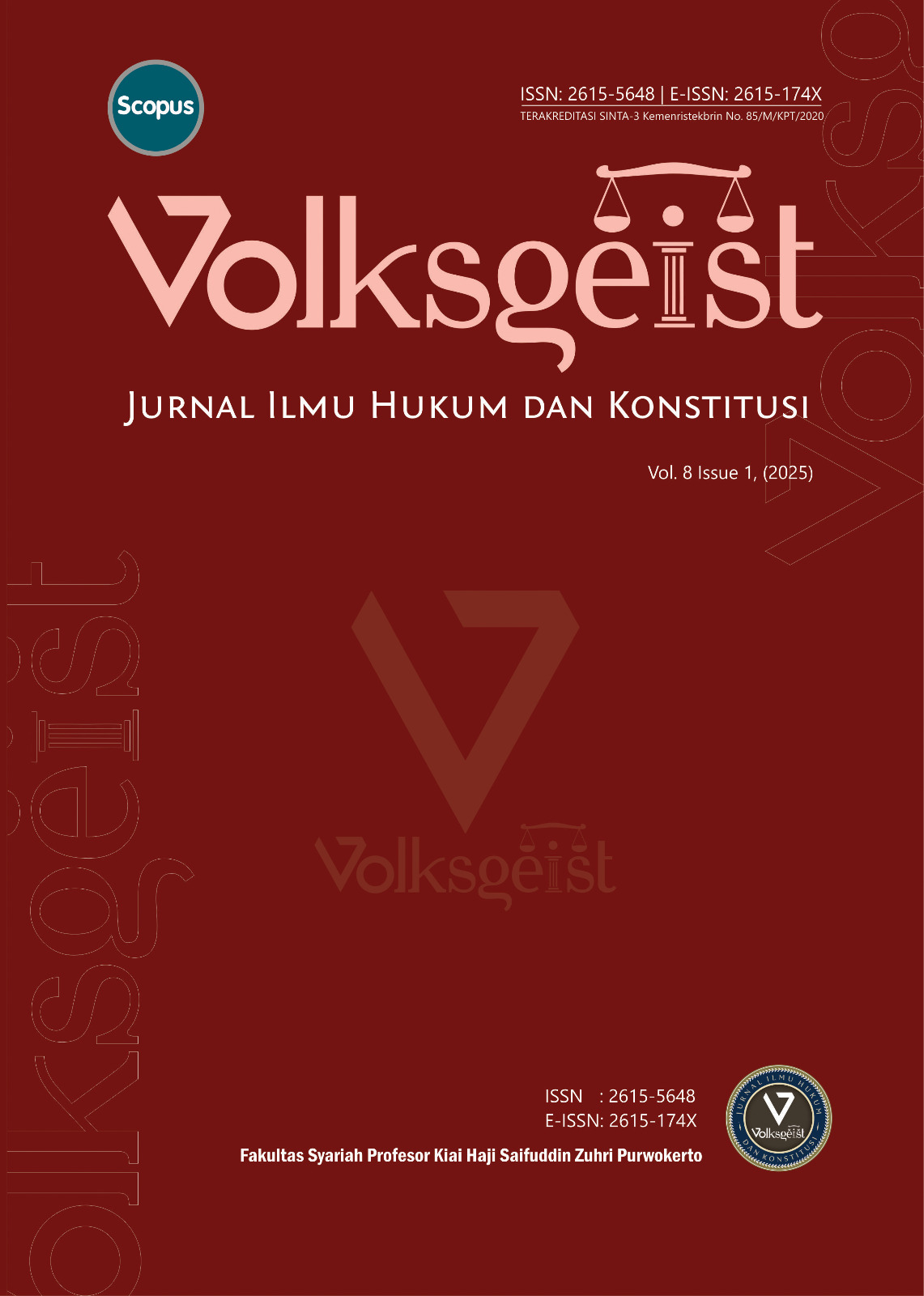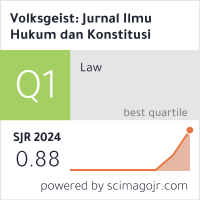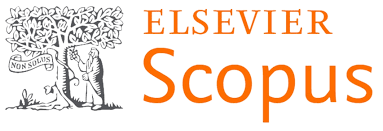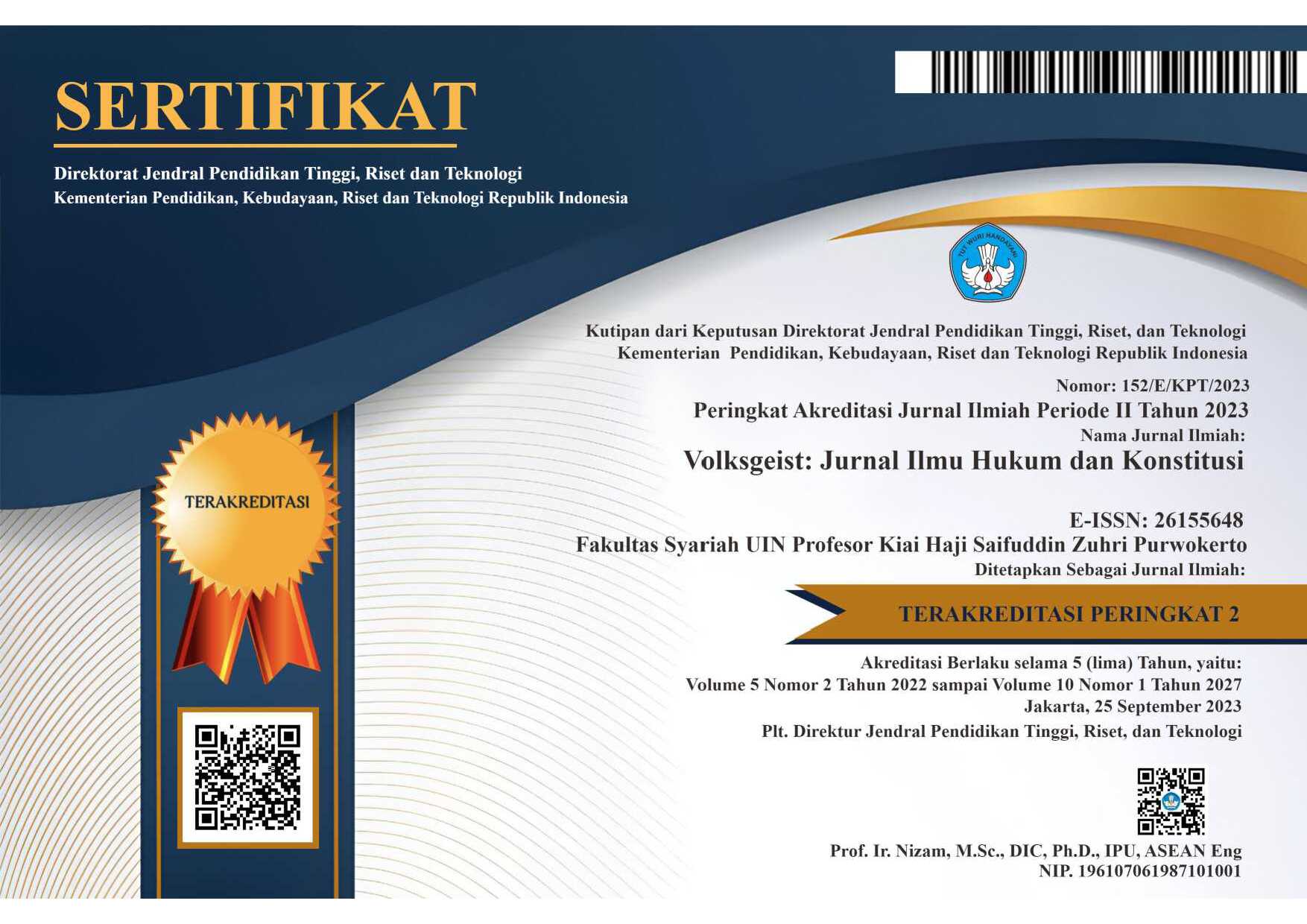Recomposing the Handover and Return to Parents in the Juvenile Justice System in Indonesia: Dilemma between Best Interest of the Juvenile and Legal Shadow
Keywords:
Diversion; juvenile justice system; measure; returning to parents.Abstract
The Indonesian Juvenile Justice System, established by Law No. 11 of 2012, focused on restorative justice and diversion strategies. However, two distinct aspects—handover and return to parents—do not possess sufficient supervisory measures, which raises doubts about their effectiveness in reducing recidivism and serving justice for victims. This article analyzes the legal framework and practical application of these elements using both normative and empirical methods, including interviews conducted with probation officers at the Purwokerto Correctional Center. The results indicate that although both approaches strive to safeguard the psychological health of child offenders, they lack enforceable responsibilities for parents or active community oversight. This results in a notable legal gap at the implementation level. The study suggests a redesign that combines the oversight of probation officers with community involvement to ensure observable behavioral improvements and accountability. This model aims to harmonize the principles of restorative justice with societal demands for fair justice and consideration for victims. The novelty of this article lies in providing a comprehensive institutional framework for post-diversion supervision, which has been mostly overlooked in earlier research.Downloads
References
Abdul Gani, Ruslan, and Retno Kusuma Wardani. “Restorative Justice for Settlement of Minor Maltreatment in the Legal Area of the Merangin Police, Jambi Province.” Al-Risalah: Forum Kajian Hukum Dan Sosial Kemasyarakatan 23, no. 1 (June 29, 2023): 93–107. https://doi.org/10.30631/ALRISALAH.V23I1.1333.
Adimas Maharaja Syahadat, Rini Fathonah, and Dona Raisa Monica. “Implementasi Diversi Terhadap Anak Sebagai Pelaku Tindak Pidana Penganiayaan.” Aktivisme: Jurnal Ilmu Pendidikan, Politik Dan Sosial Indonesia 1, no. 4 (October 2024): 121–37. https://doi.org/10.62383/aktivisme.v1i4.561.
Alam, Arief Syahrul, and Ani Purwati. “Diversi Sebagai Wujud Kebijakan Pemidanaan Dalam Sistem Peradilan Pidana Anak Di Indonesia.” De Jure: Jurnal Hukum Dan Syar’iah 7, no. 2 (December 2015): 181–90. https://doi.org/10.18860/j-fsh.v7i2.3524.
Alhakim, Abdurrakhman. “DIVERSION AS A LEGAL CONCEPT THAT IS EQUITABLE FOR CHILDREN IN INDONESIA.” Mizan: Jurnal Ilmu Hukum 11, no. 2 (December 2022): 147. https://doi.org/10.32503/mizan.v11i2.3102.
Amarini, Indriati, Gamalel Rifqi Samhudi, Safitri Mukarromah, Noorfajri Ismail, and Yusuf Saefudin. “Social Reintegration after the Implementation of Restorative Justice in the Indonesian Criminal Code.” Jurnal Media Hukum 31, no. 1 (May 2024): 115–33. https://doi.org/10.18196/jmh.v31i1.20655.
Aprilianda, Nurini, Ansori, and Febrianika Maharani. “Excusing Child Offenders: A Victim Justice Perspective.” Legality: Jurnal Ilmiah Hukum 32, no. 2 (2024): 433–52. https://doi.org/10.22219/ljih.v32i2.33937.
Barrett, James G., Esther Lee, Varshini Odayar, Margo Moyer, Benjamin L.ê. Cook, and Dharma E. Cortés. “‘ We’re Not Your Traditional Police Department .’ A Qualitative Implementation Evaluation of a Juvenile Diversion Program.” Juvenile and Family Court Journal 73, no. 4 (December 2022): 39–53. https://doi.org/10.1111/jfcj.12228.
BBC News Indonesia. “Empat Anak Pelaku Pemerkosaan Dan Pembunuhan Siswi SMP Di Palembang Divonis Bersalah – ‘Pelaku Terpapar Konten Pornografi,’” 2024.
BECK, VICTORIA SIMPSON, ROBERT J. RAMSEY, JUDGE THOMAS R. LIPPS, and LAWRENCE F. TRAVIS. “Juvenile Diversion: An Outcome Study of the Hamilton County, Ohio Unofficial Juvenile Community Courts.” Juvenile and Family Court Journal 57, no. 2 (April 2006): 1–10. https://doi.org/10.1111/j.1755-6988.2006.tb00117.x.
Blitzman, Jay D. “Gault’s Promise Revisited: The Search For Due Process.” Juvenile and Family Court Journal 69, no. 2 (June 2018): 49–77. https://doi.org/10.1111/jfcj.12112.
Bloch, Kate. “Virtual Reality: Prospective Catalyst for Restorative Justice.” SSRN Electronic Journal, 2020. https://doi.org/10.2139/ssrn.3672807.
BYER, JUDGE JOAN L., and JEFFREY KUHN. “A Model Response to Truancy Prevention: The Louisville Truancy Court Diversion Project.” Juvenile and Family Court Journal 54, no. 1 (January 2003): 59–67. https://doi.org/10.1111/j.1755-6988.2003.tb00148.x.
Cao, Oanh Thi, and Tuan Van Vu. “Proposing Restorative Justice Models as Alternative Approaches to Addressing Criminal Matters: A Case Study of Judicial Systems in Civil and Common Law Countries.” Access to Justice in Eastern Europe 7, no. 4 (November 2024): 1–27. https://doi.org/10.33327/AJEE-18-7.4-a000108.
Carpentier, J, and J Proulx. “Adolescent Sex Offender Recidivism: Risk Factors and Treatment Implications.” Revue Internationale de Criminologie et de Police Technique et Scientifique 62, no. 4 (2009): 337–58.
Cashmore, Judy. “Juvenile Justice: Australian Court Responses Situated in the International Context,” 197–207, 2013. https://doi.org/10.1007/978-94-007-5928-2_12.
Cauffman, Elizabeth, Jordan Beardslee, Colleen Sbeglia, Paul J. Frick, and Laurence Steinberg. “Trajectories of Offending over 9 Years after Youths’ First Arrest: What Predicts Who Desists and Who Continues to Offend?” Journal of Research on Adolescence 34, no. 4 (2024): 1312–25. https://doi.org/10.1111/jora.12926.
detik. “Tragis! Siswi SD Di Sumbar Tewas Diduga Dibakar Teman,” 2024.
Devi Selvian, Kadek, Ni Putu Rai Yuliartini, and Ketut Sudiatmaka. “Implementasi Upaya Diversi Dalam Penyelesaian Tindak Pidana Pencurian Oleh Anak Di Kabupaten Buleleng.” Jurnal Komunitas Yustisia 1, no. 1 (September 2020): 11. https://doi.org/10.23887/jatayu.v1i1.28654.
Dickerson, James G., Crystal Collins‐Camargo, and Ramie Martin‐Galijatovic. “How Collaborative the Collaboration? Assessing Interagency Collaboration within a Juvenile Court Diversion Program.” Juvenile and Family Court Journal 63, no. 3 (June 2012): 21–35. https://doi.org/10.1111/j.1755-6988.2012.01078.x.
Donnelly, Michelle. “The Relationship between Compliance and Compulsion, and Dynamics of Diversion, in Child Welfare Decision-Making.” International Journal of Law, Policy and the Family 37, no. 1 (January 2023). https://doi.org/10.1093/lawfam/ebac035.
Firdausyah, Egitya. “Analisis Penyebab Pelarian Anak Didik Pemasyarakatan Di Lembaga Pembinaan Khusus Anak Kelas I Kutoarjo.” SUPREMASI : Jurnal Hukum 4, no. 1 (October 2021): 31–45. https://doi.org/10.36441/supremasi.v4i1.384.
Fitriati, Fitriati, and Mohamat Gunawan. “Efektivitas Penyelesaian Penyalahgunaan Narkotika Yang Dilakukan Anak Secara Diversi Terhadap Pengulangan Tindak Pidana (Studi Pada Tahap Penyidikan Oleh Satresnarkoba Polresta Padang).” UNES Journal of Swara Justisia 7, no. 1 (April 2023): 52–65. https://doi.org/10.31933/ujsj.v7i1.309.
Gurusi, La. “Juridical Analysis of The Application of Diversion in Child Crime Cases to Realize Restorative Justice at The Court Level.” Jurnal Hukum Volkgeist 6, no. 1 (December 2021): 21–26. https://doi.org/10.35326/volkgeist.v6i1.1462.
Haeranah, Haeranah, and Amriyanto Amriyanto. “Ganti Kerugian Dan Rehabilitasi Bentuk Perlindungan Terhadap Korban Tindak Pidana Dan Korban Proses Penegakan Hukum Di Indonesia.” De Jure Jurnal Ilmiah Ilmu Hukum 2, no. 1 (December 2020): 68–82. https://doi.org/10.33387/dejure.v2i1.3035.
Hariyanto, Hariyanto, Ahmad Rezy Meidina, and Mabarroh Azizah. “Decentralization and the Fulfilments of Children’s Rights: Challenges and Opportunities for Local Government in Indonesia.” Lex Scientia Law Review 8, no. 2 (November 30, 2024): 677–706. https://doi.org/10.15294/LSLR.V8I2.14373.
Heri, Ririn Nurfaathirany. “Diversion Toward Juvenile Crime In South Sulawesi.” Yuridika 37, no. 1 (March 2022): 193–210. https://doi.org/10.20473/ydk.v37i1.29149.
Hiola, Rommy Yusuf, Aliyas Aliyas, and Suardi Rais. “Optimization of Social Report as a Consideration of Diversion in The Child Criminal System.” Jurnal Hukum Volkgeist 6, no. 1 (December 2021): 93–100. https://doi.org/10.35326/volkgeist.v6i1.1613.
Kementerian Perencanaan Pembangunan. “Peta Jalan: Penguatan Sistem Peradilan Pidana Anak Indonesia 2023-2027.” Kementerian Perencanaan Pembangunan, 2023.
Khairunnisa, Dwi. “CRIMINAL JUVENILE LIABILITIES UNDER INDONESIAN LAWS AND THE 1989 UNITED NATIONS CONVENTION ON THE RIGHTS OF THE CHILD: AN ANALYSIS.” Kopelma Darussalam, Kec. Syiah Kuala. Vol. 03, 2023.
Kompas. “Siswa SMP Yang Bakar Sekolah Di Temanggung Disebut Caper, Kepsek: Dia Minta Perhatian,” 2023.
Kurniawan, Itok Dwi. “The Implementation of Restorative Justice for Children Who Commit Crimes from the Perspective of National Law and the Qanun Jināyat” 11, no. 2 (2024): 2477–0280. https://doi.org/10.24952/multidisipliner.v11i2.13360.
Kusuma, Yosy Yudha. “OPTIMALISASI PERAN PEMBIMBING KEMASYARAKATAN TERHADAP PENGAWASAN KLIEN PEMASYARAKATAN DI BALAI PEMASYARAKATAN KELAS I SEMARANG.” MAGISTRA Law Review 4, no. 01 (January 2023): 45. https://doi.org/10.56444/malrev.v4i01.3633.
Massey, Amber. “An Eye for an Eye Will Make the Whole World Blind: How Restorative Justice Will Help Florida See Again.” Nova Law Review. Vol. 43, 2019.
Moeljatno. Membangun Hukum Pidana. Jakarta: Bina Aksara, 1985.
Newton, Alexander, Xennor May, Steven Eames, and Maryam Ahmad. “Economic and Social Costs of Reoffending Analytical Report,” 2019.
Nur, Rafika, Handar Subhandi Bakhtiar, Nurul Miqat, Darmawati, and Mustawa. “Model of Punishment: Juvenile Justice Systems.” Jambura Law Review 3, no. Special issue (2021): 35–56. https://doi.org/10.33756/jlr.v3i0.8313.
Nurqalbi, Vivi. “Analysis of Diversion Arrangements in the Beijing Rules and the Juvenile Criminal Justice System in Indonesia.” European Journal of Law and Political Science, 2023. https://doi.org/10.24018/ejpolitics.2023.2.1.53.
Panjaitan, Bernat, Risdalina Risdalina, and Kusno Kusno. “Balance of Monodualistic Principles in Different Efforts at the Level of Investigation on Child Abuse of Narcotics Crime.” JPPI (Jurnal Penelitian Pendidikan Indonesia) 9, no. 4 (December 2023): 281. https://doi.org/10.29210/020232280.
Pozuelo Pérez, Laura. “Pena de Muerte y Cadena Perpetua Para Menores Infractores: La Necesidad de Combatir La Crueldad Con Los Estándares de Decencia.” Revista de La Facultad de Derecho y Ciencias Políticas 54, no. 140 (2024): 1–23. https://doi.org/10.18566/rfdcp.v54n140.a05.
Rahman, Abdul, Zainal Amin Ayub, and Ratnawati Ratnawati. “Legal Framework for Protecting Children from Commercial Sexual Exploitation.” Volksgeist: Jurnal Ilmu Hukum Dan Konstitusi 8, no. 1 (April 22, 2025): 87–110. https://doi.org/10.24090/VOLKSGEIST.V8I1.13156.
Rismana, Daud, Ali Maskur, Rifi Maria Laila Fitri Permonoputri, Hariyanto Hariyanto, and Hajar Salamah Salsabila Hariz. “The Legal Effectiveness of Juvenile Diversion: A Study of the Indonesian Juvenile Justice System.” Khazanah Hukum 7, no. 2 (June 21, 2025): 190–205. https://doi.org/10.15575/KH.V7I2.44162.
Rizanizarli, Rizanizarli, Mahfud Mahfud, Riza Chatias Pratama, and Fikri Fikri. “The Application of Restorative Justice for Children as Criminal Offenders in the Perspective of National Law and Qanun Jināyat.” Samarah: Jurnal Hukum Keluarga Dan Hukum Islam 7, no. 1 (March 2023): 21. https://doi.org/10.22373/sjhk.v7i1.15633.
Rochaeti, Nur, and Nurul Muthia. “Socio-Legal Study of Community Participation in Restorative Justice of Children in Conflict with the Law in Indonesia.” International Journal of Criminology and Sociology 10 (February 2021): 293–98. https://doi.org/10.6000/1929-4409.2021.10.35.
Rodríguez-Pellejero, Jose M., Itahisa Mulero-Henríquez, and Zaira Santana Amador. “Real-Time Stress Monitoring in a Child-Friendly Court: A Repeated Measures Field Study.” Humanities and Social Sciences Communications 11, no. 1 (2024): 1–10. https://doi.org/10.1057/s41599-024-03410-w.
Sari, Ratih Mega Puspa, and Sivani Ardi Apritania. “The Form of Resolution of Juvenile Delinquency in Indonesia.” Jurnal Hukum 40, no. 1 (July 2024): 118–28. https://doi.org/10.26532/jh.v40i1.38600.
Sarinastitin, E. “Pendidikan Holistik Integratif Dan Terpadu Untuk Pembentukan Karakter Anak Usia Dini.” Early Childhood Education Journal of Indonesia 2, no. 1 (2019): 11–17.
Sarwirini, Sarwirini, and Trian Diarsa. “Implementation of Juvenile Reprimand in Indonesia.” Yuridika 38, no. 1 (January 2023): 95–108. https://doi.org/10.20473/ydk.v38i1.33857.
Schwalbe, Craig S., Robin E. Gearing, Michael J. MacKenzie, Kathryne B. Brewer, and Rawan Ibrahim. “A Meta-Analysis of Experimental Studies of Diversion Programs for Juvenile Offenders.” Clinical Psychology Review 32, no. 1 (February 2012): 26–33. https://doi.org/10.1016/j.cpr.2011.10.002.
Senandi, Winna Amelia A. “Implementation of Sanctions on Juvenile Offenders in Criminal Justice System.” Papua Law Journal 4, no. 1 (November 2019). https://doi.org/10.31957/plj.v4i1.1044.
Setyorini, Erny Herlin, Evi Kongres, Asri Gresmelian Eurike Hailitik, and Pandu Satriawan Zainulla. “The Effectiveness of Diversion Through Restorative Justice For Handling Children In The East Java Police.” SASI 29, no. 1 (March 2023): 59. https://doi.org/10.47268/sasi.v29i1.1190.
Sholehuddin, M. Sistem Sanksi Dalam Hukum Pidana, Ide Dasar Double Track System Dan Implementasinya. Raja Grafindo Persada, 2007.
Sidrat, Muhammad, Sabrina Hidayat, and Herman Herman. “Syarat Diversi Pada Anak Yang Berkonflik Dengan Hukum Dalam Konsep Pemidanaan.” Halu Oleo Legal Research 1, no. 2 (July 2019): 277. https://doi.org/10.33772/holresch.v1i2.6569.
Sinatrio, Wikan. “The Implementation of Diversion and Restorative Justice in the Juvenile Criminal Justice System in Indonesia.” Journal of Indonesian Legal Studies, 2019. https://doi.org/10.15294/jils.v4i01.23339.
Smith, Roger. “Diversion, Rights and Social Justice.” Youth Justice, 2021. https://doi.org/10.1177/1473225420902845.
Soeardy, Soeardy, Ruslan Renggong, and Baso Madiong. “EFEKTIVITAS FUNGSI PEMBIMBING KEMASYARAKATAN TERHADAP PENGAWASAN KLIEN ANAK KASUS NARKOTIKA DI LEMBAGA PENYELENGGARA KESEJAHTERAAN SOSIAL.” Indonesian Journal of Legality of Law, 2021. https://doi.org/10.35965/ijlf.v3i1.406.
Sofyan, Adrian. “Pengawasan Klien Pemasyarakatan Pada Program Pembebasan Bersyarat Oleh Pembimbing Kemasyarakatan.” Jurnal Health Sains, 2020. https://doi.org/10.46799/jsa.v1i7.133.
Suharyanto, Muhammad Edi, and Henny Susilowati. “Diversi Dan Restorative Justice.” Journal of Mandalika Literature. Vol. 5, 2024.
Tambunan, Samuel Parsaoran. “LEGAL ANALYSIS OF THE POSITION OF SOCIAL RESEARCH REPORT ON CHILD CRIMINAL DECISIONS.” Nomoi Law Review 5, no. 2 (November 2024): 337–49. https://doi.org/10.30596/nomoi.v5i2.21880.
Willingham, Michelle L. “Successful Outcomes in Juvenile Justice: Overcoming Community Based and Correctional Challenges.” Juvenile and Family Court Journal 75, no. 1 (March 2024): 21–31. https://doi.org/10.1111/jfcj.12252.
Witvliet, Charlotte V. O., Nathaniel G. Wade, Everett L. Worthington, Lindsey Root Luna, Daryl R. Van Tongeren, Jack W. Berry, and Jo-Ann Tsang. “Apology and Restitution: Offender Accountability Responses Influence Victim Empathy and Forgiveness.” Journal of Psychology and Theology 48, no. 2 (June 2020): 88–104. https://doi.org/10.1177/0091647120915181.
Wolff, Kevin T., Michael T. Baglivio, and Jonathan Intravia. “Dynamic Risk Trajectories, Community Context, and Juvenile Recidivism.” Journal of Criminal Justice, 2023. https://doi.org/10.1016/j.jcrimjus.2023.102070.
Zarkasi, Moch Fauzan, Nur Azisa, and Haeranah Haeranah. “Implications of Renewal System of Criminal Justice Based on the Principles of Restorative Justice on The Role of Probation and Parole Officer.” Khazanah Hukum 4, no. 1 (March 2022): 29–44. https://doi.org/10.15575/kh.v4i1.17354.
Downloads
Published
How to Cite
Issue
Section
License
Copyright (c) 2025 Setya Wahyudi, Rani Hendriana, Dwiki Oktobrian, Bhanu Prakash Nunna

This work is licensed under a Creative Commons Attribution-ShareAlike 4.0 International License.
Copyright Notice
Authors who publish with this journal agree to the following terms: Authors retain copyright and grant the journal right of first publication with the work simultaneously licensed under a Creative Commons Attribution-ShareAlike 4.0 International License that allows others to share the work with an acknowledgment of the work's authorship and initial publication in this journal.











